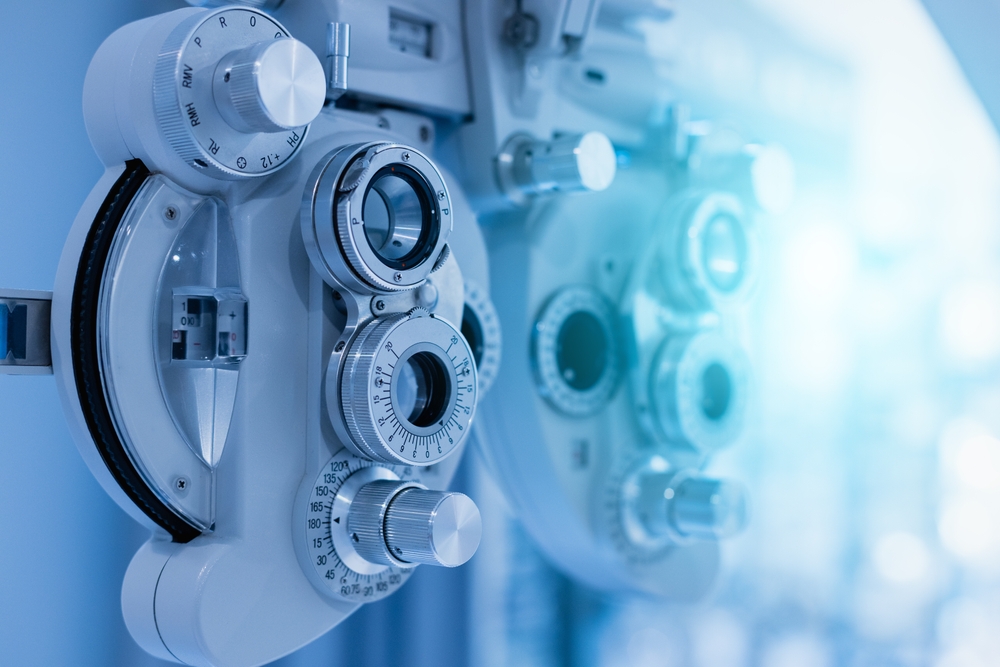don't forget to blink!

Myopia is a prevalent vision condition that typically begins in childhood and can progress throughout adolescence. It is caused by a combination of genetic and environmental factors, including excessive time spent on near-work activities, such as reading, using digital devices, and lack of outdoor time. As the prevalence of myopia continues to rise globally, it is essential to address this issue proactively.
Understanding the Causes of Myopia
The primary cause of myopia is the eye's inability to focus light correctly on the retina. This can be due to the eye's lens or cornea being too curved, resulting in the light focusing in front of the retina instead of directly on it. Other factors that contribute to the development of myopia include:
• Genetics: Individuals with a family history of myopia are more likely to develop the condition themselves.
• Environmental Factors: Prolonged exposure to near-work activities, such as reading, using digital devices, and lack of outdoor time, can increase the risk of developing myopia.
• Age: Myopia typically begins in childhood and can progress throughout adolescence, with the condition often stabilizing in adulthood.
Common Signs and Symptoms of Myopia
The primary symptom of myopia is blurred vision when looking at distant objects. Other common signs and symptoms include:
· Difficulty seeing the board or road signs clearly
· Squinting or straining the eyes to see distant objects
· Headaches or eye strain after prolonged near-work activities
· Frequent need to sit closer to the television or computer screen
· Difficulty with night driving or glare from headlights
If you experience any of these symptoms, it is important to schedule an eye exam with an optometrist for a proper diagnosis and treatment plan.
The Importance of Regular Eye Exams for Early Diagnosis
Regular eye exams are crucial for the early detection and management of myopia. Optometrists can identify the condition through a comprehensive eye examination, which may include:
· Measuring the refractive error of the eyes
· Assessing the curvature of the cornea
· Evaluating the overall health of the eyes
Early diagnosis of myopia allows for the implementation of appropriate management strategies, which can help slow the progression of the condition and prevent further vision complications. By scheduling regular eye exams, you can take proactive steps to maintain your eye health and ensure optimal vision.
Orthokeratology (Ortho-K) as a Non-Surgical Management Option
Orthokeratology, or Ortho-K, is a non-surgical management option for myopia that involves the use of specialized contact lenses. These lenses are worn overnight and gently reshape the cornea, temporarily improving vision during the day without the need for corrective lenses.
Ortho-K lenses work by applying gentle pressure to the cornea, flattening the central area and steepening the peripheral regions. This change in corneal curvature allows light to focus correctly on the retina, resulting in clearer vision. The effects of Ortho-K lenses are temporary, and the cornea will gradually return to its original shape once the lenses are removed.
One of the key benefits of Ortho-K is its potential to slow the progression of myopia in children and adolescents. By temporarily reshaping the cornea, Ortho-K can reduce the eye's need to elongate, which is a primary driver of myopia development. This makes Ortho-K a promising option for those looking to manage myopia without the use of corrective lenses or surgery.
MiSight Contact Lenses for Myopia Management
MiSight contact lenses are a specialized type of contact lens designed specifically for myopia management in children and adolescents. These lenses incorporate a unique optical design that aims to slow the progression of myopia by controlling the focus of light on the retina.
The MiSight lens has a central optical zone that corrects the refractive error, providing clear vision, and a peripheral optical zone that creates a slight defocus, which may help slow the eye's elongation and the worsening of myopia.
MiSight lenses are worn during the day and removed at night, similar to traditional contact lenses. The lenses are designed to be replaced on a daily basis, ensuring a fresh, clean lens for optimal comfort and vision.
Studies have shown that the use of MiSight contact lenses can significantly slow the progression of myopia in children, with some reports indicating a reduction in myopia progression of up to 59% over a three-year period.
Taking Proactive Steps to Manage Myopia
Myopia is a prevalent vision condition that requires proactive management to prevent further vision complications. By understanding the signs, symptoms, and various management options available, you can take steps to maintain optimal eye health and ensure clear, comfortable vision.
To learn more on myopia and effective management strategies, contact Dr. Patel to schedule a comprehensive eye exam. Visit Hills Vision Studio at our office in Bedminster, New Jersey, or call (908) 781-7707 to book an appointment today.




